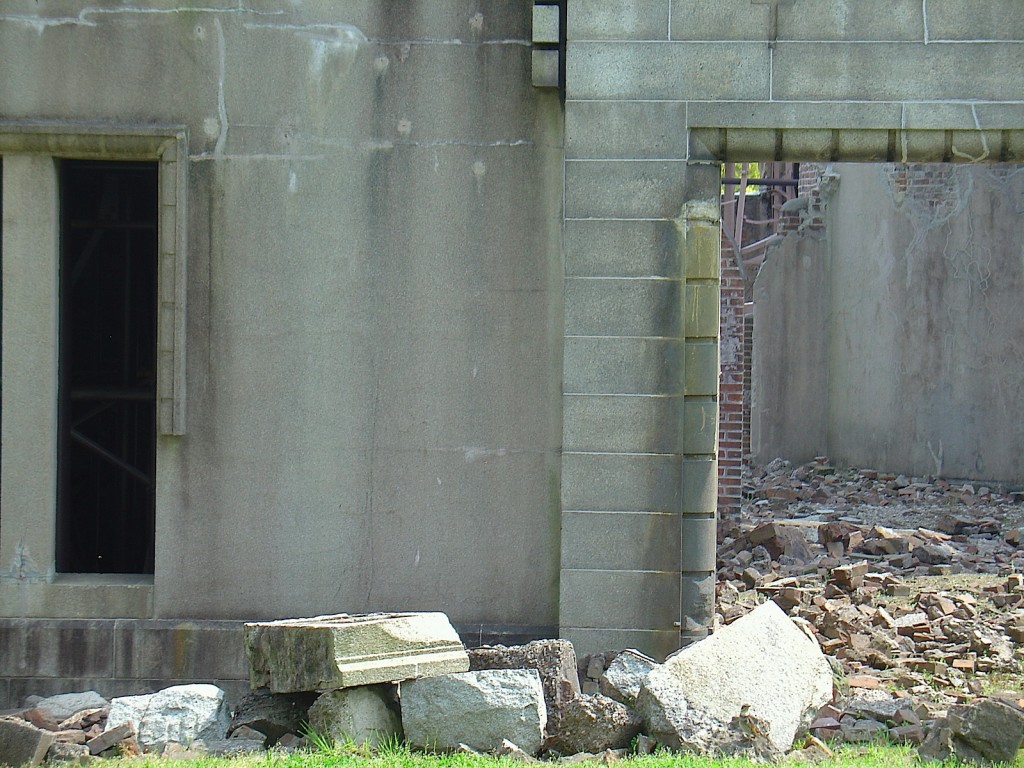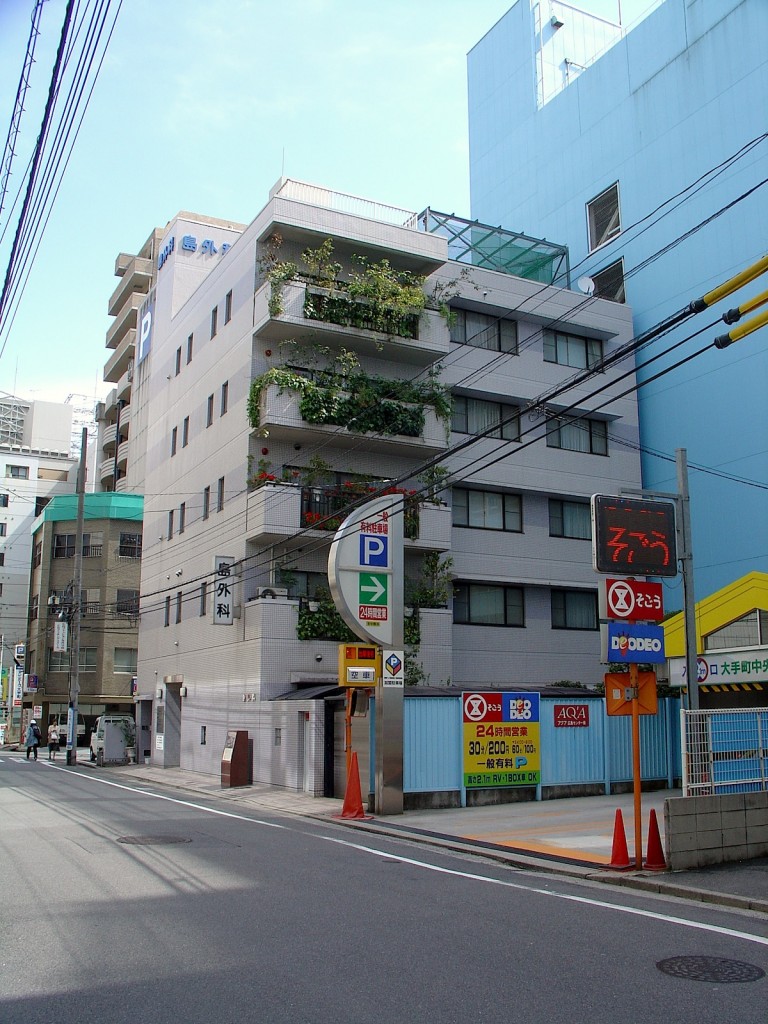There is a theory which has not been accurately formulated or given a name, but which is very widely accepted and is brought forward whenever it is necessary to justify some action which conflicts with the decency of the average human being. It might be called, until some better name is found, the Theory of Catastrophic Gradualism. According to this theory, nothing is ever achieved without bloodshed, lies, tyranny and injustice, but on the other hand no considerable change for the better is to be expected as the result of even the greatest upheaval. History necessarily proceeds by calamities…
George Orwell wrote those words lines for the in November 1945, and in spite of the timing he was not thinking particularly of the atomic bombings of Japan just three months before. However, his words also well describe that situation. I took the above photograph of the Atomic Dome in Hiroshima, Japan on April 15th, 2007 during the month I spent researching wine, sake and Japanese culture. It was the only one of my photographs that didn’t turn these ruins into just another historical landmark, but showed them as one of few surviving reminders of the almost five square miles of complete destruction caused by the atomic bomb dropped by the USAAF on the city 70 years ago today.
On August 6th, 1945 about 70,000 of the city’s 340,000 citizens were killed by the direct effects of the bomb’s explosion, a figure which had doubled by the end of the year mainly due to radiation sickness; more than 40% of the entire population! The great majority of the dead were civilians, and in Nagasaki (the target of the second atomic bombing three days later) where the corresponding figures were almost 40,000 dead on the day of the atomic bombing and close to 80,000 by the end of the year more than 99% of the victims were civilians. But what do numbers really tell us? They are necessary to give a sense of scale to the most terrible events from the atomic bombings of Japan to the Holocaust, but they also mask the identities of the individual victims. For a detailed description of what those number meant in terms of human suffering I recommend John Hersey’s book Hiroshima first published in the August 31st, 1946 issue of The New Yorker, which it almost entirely filled. It describes in a matter of fact way what 6 survivors experienced, but I warn you that in spite of that and the distance in time it’s not an easy read.
Of course, it is important not to forget the wider contexts of the Pacific War and the Second World War as a whole. Almost all of Japan’s major cities were destroyed by USAAF firebombing during the last six months of the Second World War, most terribly in the raid on residential Tokyo of March 9th, 1945 that killed about 100,000 civilians. Of course, the Japanese also conducted air raids on urban centers in China and committed many other war crimes, of which the Nanking massacre was the worst. And then there are the 6 million Jews and 5 million Slavic people murdered by the Nazis and their collaborators in Europe, plus smaller (but still very large numbers) of European civilians of many nationalities killed by all sides in that conflict. This isn’t the place to try and catalogue all the genocidal horrors of the global conflagration. Professional historians are better equipped for this task. There is extensive literature about all of these events for anyone who is interested. I just read Elie Wiesel’s Night, his autobiographical description of the Holocaust, which spells out what that enormous genocidal crime meant for the victims. It only confirmed my feeling of compassion for all victims of war and genocide.
The first reason for covering this subject is my personal connection to Hiroshima, where in 2007 the Yoshinaga family, including one Hibakusha (survivor of the A bomb), showed me great hospitality and generosity. Then there are the results of my research over almost a decade that leads me to the conclusion that the first atomic bombing was unquestionably a deliberate attack on a civilian target and no warning was given precisely in order to better study the effects upon the, “Hiroshima urban industrial area”. Already that wording in Order Nr. 13 of August 2nd, 1945 signed by Acting Chief of Staff General Thomas T. Hardy make the non-military nature of the bombing’s target rather clear.
I first saw a facsimile of that order in the Peace Memorial Museum of Hiroshima, but it was not at the beginning of the exhibit as you might have expected. Instead the museum began by telling the history of Japanese militarism and Hiroshima’s role in that. There was no attempt there to, much less deny, the wider context of the Second World War, or the wars that preceded it. This is did not align with how the international media portray Japan as nation of revisionists determined to play down the crimes of the past, and it is a lesson from which we could learn. For example, although the Manhattan Project was American controlled, it was actually British-American joint venture that enjoyed considerable material support from Canada. The Quebec Agreement of July 1943 gave British Prime Minister Winston Churchill a veto over the use of the atomic bomb. Instead, he approved its use against Japan and consulting with none of his cabinet before taking that decision. Which Churchill biography tells you that though? As George Orwell also wrote in November 1945:
There are always the most excellent, high-minded reasons for concealing the truth, and these reasons are brought forward in almost the same words by supporters of the most diverse causes…So often it seems a positive duty to suppress or color the facts! And yet genuine progress can only happen through increasing enlightenment, which means the continuous destruction of myths.
The second reason for devoting a long posting to a subject so far from this blog’s core theme is to make the observation that if atomic weapons are ever used in anger again, many of them will undoubtedly be dropped on civilian targets. For my entire lifetime this was the genocidal threat of the nuclear arsenals on both sides of the Cold War, and as a child and young person I felt this in a visceral way, particularly in 1983, the second terrifying high point of the Cold War after the so-called Cuba Crisis of 1962. (It was about Russian nuclear missiles on Cuba, but also about American nuclear missiles in Turkey, Italy and Britain). My parents told me all about their fears in October 1962, and I relived them 21 years later.
The thousands of nuclear weapons retained to this day continue this intimidation, even if the chances of them being used have thankfully reduced since the collapse of the Soviet Union in 1991. That doesn’t alter the fact that in August 1945 the principal was established that the use of atomic weapons against cities is legitimate, even if the number of victims is enormous. This was an extension of the legitimacy the Allies gave to their firebombing of entire cities in Germany and Japan, but achieved more quickly and economically. Of course, we were lucky that deterrence worked, and it is worth nothing that no Soviet leader or American President ever seriously considered starting a nuclear conflict, although some generals on both sides were in favor of this at several points.
On my last morning in Hiroshima I went for a run, passing the Hypocenter, the point above which the bomb exploded, the brown stone obelisk next to the apartment building) picture above. As I was returned to my hotel I had to wait for a traffic light to cross the road. Suddenly, on the other side of the busy street from me I saw one of those large clocks decorated with flowering plants that you see in public parks around the world. It had been sponsored by the Japanese watch manufacturer CITIZEN, and at that moment it said the time was 8:15 am. This was exactly the time the atomic bomb was dropped on Hiroshima on August 6th 1945, and one of the most potent symbols of that day are watches and clocks stopped forever at the moment of the explosion. Of course, it was the citizens of Hiroshima who paid the price for this act the American and British governments still have not properly acknowledged for what it was. The claim that the atomic bombings ended the War in the Pacific has been well refuted by professional historians, so this argument is spurious. Anyone who thinks it is possible to deny such acts with impunity is directed to Hiroshima in America by Robert Jay Lifton & Greg Mitchell who describe the psychological consequences of being in denial for decades.
This blog posting does not seek to assign blame though, rather it promotes facing the past, so that we aren’t doomed to repeat it. For if we do repeat it there will be no pleasure in wine, or a thousand other beautiful things we take for granted. With the next posting this blog returns to its core subject: the beauty of wine.


![21082011079 [1600x1200]](http://www.stuartpigott.de/wp-content/uploads/2015/08/21082011079-1600x1200.jpg)

![120114_riesling_global_RZ [1600x1200]](http://www.stuartpigott.de/wp-content/uploads/2015/08/120114_riesling_global_RZ-1600x12002.jpg)